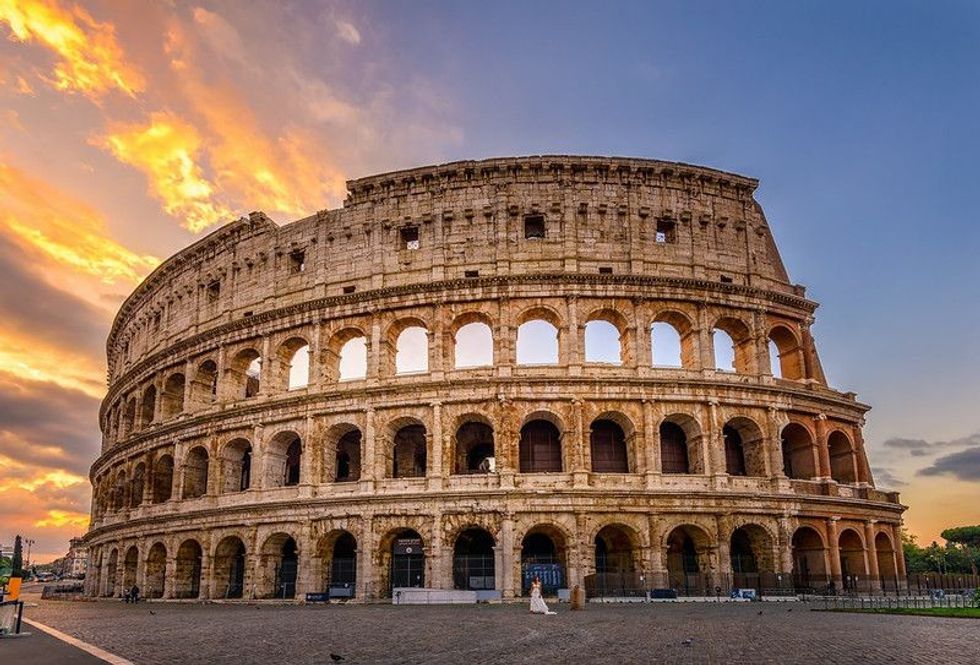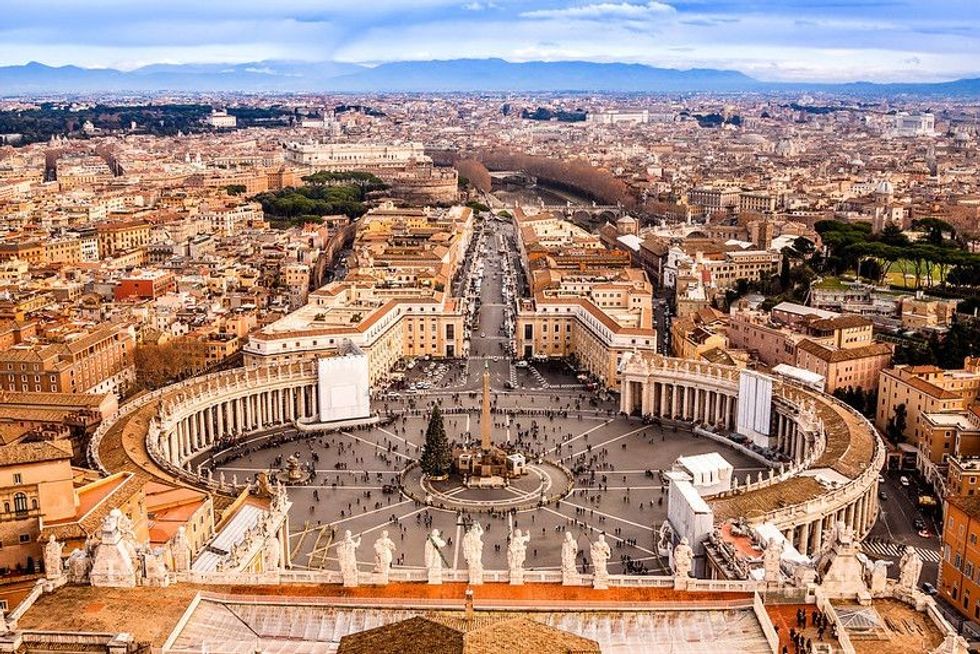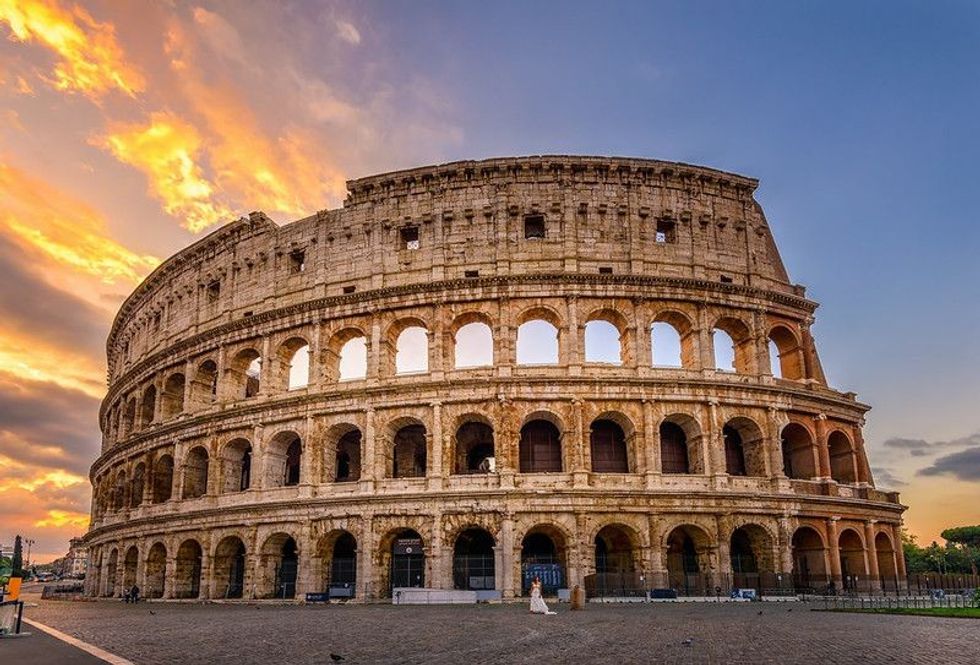Everyone wants to have more fun in their lives, and fun is usually the key to happiness.
When we talk about the ancient world, we usually think of emperors, castles, cuisine, and traditional forms, but today we are looking at some unusual stuff. Today we have brought you some fun facts about ancient Rome.
When was the ancient Rome time period? In history, ancient Rome refers to Roman society from the establishment of the Italian city of Rome in the eighth century BC until the fall of the Western Roman Empire in the fifth century AD.
This period begins with the Roman Kingdom from 753 to 509 BC, followed by the Roman Republic from 509 to 27 BC, later governed by the Roman Empire from 27 BC to 476 AD, until the fall of the Roman Empire.
All through ancient Rome, Roman rulers desired to keep the people occupied as many poorer people could be a significant danger to their empire. As a result, Romans enjoyed several recreations freely.
As we move on to exciting facts about Rome, please explore our other related articles like Ancient Roman food facts and Ancient Rome architecture facts, which can help you learn more about Rome.
What did ancient Romans do for fun?
Having fun has a significant impact on developing trust and establishing teamwork. Let's look at some interesting facts about what ancient Romans did for fun.
Ancient Romans mostly enjoyed wonderful public performances that invaded their senses and awoke their emotions. Roman emperors staged costly and spectacular events and built venues around the empire to promote their popularity and prestige among the people.
The heart of ancient Rome's life was the city of Rome, which was constructed on seven hills. Romulus was the first emperor of Rome. The story is that a she-wolf raised Romulus and his twin brother Remus after being abandoned in the Tiber River and later murdered Remus, becoming the first Roman emperor.
Ancient Rome housed several magnificent structures like the Colosseum and Trajan's Forum. Circus Maximus would hold spectacular parades, gladiator combat, chariot races, executions, and even simulated naval battle.
The Colosseum is the largest ancient amphitheater ever built; it is an oval amphitheater located in Rome, Italy, immediately east of the Roman Forum. It is still the same in the world today.
Chariot racing was a famous ancient Roman sport that took so seriously that it became dangerous for drivers and horses, who often suffered significant damage and even death. Still, these hazards contributed to the thrill and intrigue for spectators.
Circus Maximus, which is the first and the largest chariot-racing stadium, is a mass entertainment venue in Rome, Italy. According to Roman tradition, Romulus utilized chariot racing to divert the Sabine men soon after establishing Rome in 753 BC.
Approximately 230 Roman amphitheaters have been discovered across the Roman Empire, and the largest amphitheaters could hold 40,000–60,000 people at a time.
Munera were public performances and entertainments by individuals of great position and fortune in ancient Rome. Munera refers to duty or obligation and expresses an individual's responsibility to contribute to his society. Venatio was a kind of entertainment that involved hunting and slaughtering wild animals like lions and panthers.
Ancient Romans enjoyed Ludi, which was public games organized as the main attraction in religious festivals or as part of the official cult. The initial Ludi was a horse race in circuses later became the celebrations included animal shows with fake hunting and theatrical performances.
This made Rome the world's first city to have a population of one million people when the census was placed in the second century BC as millions of people from three continents of Europe, Asia, and Africa migrated to Rome.
It is said that the fall of Rome was due to uncontrollable thousands of Goths and other non-Roman people who fled from the Huns. This series of events grew so significant that when some people objected to Julius Caesar for extravagant spending, the priests sacrificed them on the Field of Mars.
For example, when Julius Caesar, a member of the First Triumvirate who led the Roman armies, arrived in Rome winning a battle, Triumphal activities were arranged, including 400 lion hunts, various gladiator fights, and naval combat. Even two armies of war prisoners, each comprising 2,000 people, 200 horses, and 20 elephants, battled to the death in the Circus Maximus.
They also liked to store various shrines, altars, statues, and victory trophies. The Temple of Jupiter Optimus Maximus, located on Capitoline Hill, is one of the most famous temples in Ancient Rome.
The ancient Romans developed a unique road system with a strategic plan, innovative design, and good value that connected the Roman empire. Hence the saying 'All roads lead to Rome' was born. Some Roman roads are still in use today.
How did Romans entertain themselves?
Ancient Romans facilitated a wide range of public entertainment facilities, divided into four categories in today's language. The theater was used for theatrical, music, and dance performances; the stadium was used for athletic events; the amphitheater was used for blood games. The circus or hippodrome was used for horse and chariot racing.
Ancient Romans spent the entire day in these massive open-air theaters scattered around the ancient city and empire. In the theaters, various plays were performed, and events were held all day.
Young men from all across Rome came to engage in horseback riding, archery, wrestling, and boxing at the Campus. After working out, they would go fishing or swim in River.
Ancient Romans also enjoyed playing with the ball, one of which entailed throwing a ball as high as possible and grabbing it before it hit the ground. Their recreations also covered dice games, board games, and gambling activities.
Roman emperors founded various health clubs, shopping malls, public baths, and libraries for Roman citizens. When the ancient Romans were bored, they would go to the baths to have a lot of fun.
Most Roman cities have at least one such bathing facility, which also incorporates socializing and reading areas.
Thermae is a large imperial bath complex, and Balneae, which were relatively small public or private structures. In addition to public baths, rich Romans had their own private baths built in their villa, and some baths were even built especially for the Roman armies when they were on campaign.
A Roman citizen could also visit the largest retail mall as we all have nowadays. Trajan's Market, the first-ever shopping mall by Emperor Trajan, just across from the Colosseum, provided a wide choice of merchandise and consumables.
Ancient Roman women enjoyed spending much time on their hair to achieve an attractive image. Consequently, ancient Roman women's beauty and social rank were linked to the presentation of their hair.
Hair dyeing was popular among women; for red hair, they used a combination of animal fat like goat fat and beech wood ashes, while saffron was used for golden tones.
Rich Romans mostly enjoyed eating and drinking and generally had their slaves work for them while lying down and resting. These rich Romans also hosted dinner parties to entertain their guests with fascinating dances, music, and poetry readings.
In ancient Roman history, music was also a part of Roman culture and social gatherings. During funerals, the tibia, a traditional woodwind instrument, was used as offerings to fight evil spirits. Under the legacy of ancient Greece, the Romans knew that music was linked with mathematics and knowledge.
Ancient Romans enjoyed hunting; in addition to that, they enjoyed performances of various animal stunts such as placing an arm in a lion's mouth, riding a camel while controlling lions on a chain, and making an elephant walk across a rope.
While everyone enjoyed the performances, a fire broke out in the shops around Circus Maximus, and that is when two-thirds of Rome burned.
What was the most popular form of entertainment in ancient Rome?

Visiting Rome, you can see they are an integral part of all cultures and are one of the oldest forms of human social interactions of the middle ages. While Romans enjoyed various activities, chariot racing was the most popular form of entertainment in Rome. It's where they push men into a ring and battle them to the death!
This Circus Maximus is a historic Roman chariot-racing stadium located between the Aventine and Palatine hill. It is about 2,037 ft (621 m) long and 387 ft (118 m) wide, with a capability of over 150,000 spectators. Ancient Roman women, who were barred from attending many other sports, could watch chariot races.
One of the incredible facts is that the most iconic landmark, St Peter's Basilica in Vatican City, the largest church ever built, was once in ancient Roman territory and is now in an independent state.
There is a widespread belief that following the Great Fire of Rome during 64 AD, this area became the site of numerous Christian martyrdoms, and even Saint Peter is said to have been hanged upside-down here.
Even today, the Sistine Chapel in this eternal city has distinct insights and reflects the rising time in Rome's history and is a fantastic site that is a trademark of Renaissance architecture.
During ancient times, other than games and sports, competitions in design structures and fountains became popular that even today, we can witness from the renowned fountains such as Trevi Fountain. They also invented roman baths, concrete, publications, calendars, and central heating.
What did Roman gladiators do for fun?
The name gladiator is commonly recognized for conflicting characters and games in the current age, but it evolved in ancient Rome. Let's also look at some of the interesting Rome facts and further facts about the Roman army.
A gladiator, which translates as 'swordsman' in Latin, was an armed warrior who entertained audiences by battling brutal battles with other gladiators, wild animals, and prisoners. Several fantasies were developed in clashes between gladiators that began using various weapons, such as a well-protected gladiator vs. a weakly armed gladiator.
Andabata was a blindfolded gladiator, Bestiarius was a beast-fighter, Dimachaerus had two swords, and Eques was a horseman. Murmillo was a heavily armored gladiator, who sported a helmet with a stylized fish on top, and the Retiarius gladiator fought with fisherman's equipment.
There even existed the Gladiatrix, a female gladiator, at one point.
They seldom occurred during the end of the Roman Republic and were prohibited by Emperor Commodus around 200 AD. Flamma was one of the most famous and successful Syrian gladiators under the Roman Empire who fought 34 times, won 21 times, withdrew nine times, and was defeated only four times.
Only Romans who could purchase their own armor were permitted to serve in the army. The Roman army was called the Comitia Curiata when assembled on the Campus Martius.
Other than these, there are five more disgusting facts about Rome:
Roman Emperor Nero imposed a pee charge on everyone who wished to use a public restroom.
It was believed that drinking the blood of a fallen gladiator cured epilepsy and purified the soul.
Many women bought gladiator sweat and applied it to their faces as a face cream.
Camel brain and animal wastes were formerly thought to be cure-alls
As an energy drink, charioteers used to take goat's dung.
Apart from entertainment, the Romans established a very advanced roman law and specialized legal culture with written laws.
Here at Kidadl, we have carefully created lots of interesting family-friendly facts for everyone to enjoy! If you liked our suggestions for Ancient Roman fun facts, then why not take a look at Ancient Roman government facts or Ancient Roman religion facts?










